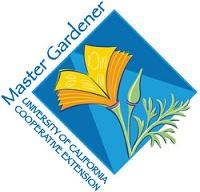
University of California
UC Master Gardener Program of Sonoma County
Kohlrabi
Kohlrabi, a member of the Brassicaceae (cabbage) family, is little-known to home gardeners despite its easy culture and versatile use when cooked or enjoyed raw. Its flavor and texture have been compared both to turnips and water chestnuts for its crunch stir fried, as a relish, or in salads.
Unusual Characteristics
- About 2 dozen heirloom and hybrid kohlrabis vary in color—green or purple—disease resistance, number of days to maturity, and shape.
- Globe-shaped kohlrabis are often confused with turnips but are sweeter and milder.
- A section of stem that gradually swells just above the soil surface is the usual edible portion.
- Leaves, which grow from the swollen globe, are also edible cooked, stir fried, or raw in salads, somewhat similar to spinach.
- Kohlrabi in the garden seems to be growing upside down, with stems and leaves emerging upright from the round, edible stem that looks like a bulb.
- Long-stemmed, blue green leaves make kohlrabi an eye-catcher in any garden.
- Cabbage family crops are normally grown as spring or fall cool-season vegetables. They become sweeter after the first frost.
- Kohlrabi can be successfully planted in spring but will become tough and less palatable if not harvested before very warm summer weather.
Growing Requirements
- Plant in full sun in fertile soil high in organic matter where other cabbage family crops have not been grown for a few years.
- Sow seeds when the soil is warm March-April in spring or August-September in fall, allowing 45-60 days to maturity. Start seeds indoors 4-6 weeks before planting outdoors.
- Set transplants 6-10 in. apart just below the first set of leaves where the globe will begin to swell. Crowding plants results in smaller bulbs.
- Keep soil evenly moist; fertilize with fish emulsion if soil is low in nutrients and growth is slow.
- Mulch with 2 in. of organic material to keep roots cool and prevent weeds.
Harvesting Techniques
- Keep an eye on enlarging bulbs; small ones are succulent, tender, and sweet. Large bulbs become woody and bitter.
- Harvest when the bulbous stems are 2-4 in. in diameter before weather turns hot in late spring.
- Allow kohlrabi to experience frost to sweeten flavor before bulbs enlarge beyond optimal size.
- Cut off at ground level, leaving ½-1 in. of stem. Bulbs will store in the refrigerator for weeks.
- Remove leaves, discard stems, and peel off the outer fibrous layer to prepare for cooking or for eating raw, grated or in slices.
Additional Information
- Sonoma County Master Gardener Vegetable Planting Summary.
- https://sonomamg.ucanr.edu/Food_Gardening_with_Less_Water/
February 2022






